Willow Flycatcher
In 2006, a willow flycatcher nest was found in multiflora rose intertwined in an 8' shrub along Cattail branch, within 20 feet of the bank. The nest was small and well-concealed and found only by watching the adults for sometime. Like typical flycatchers, they spend much of their time perched high on branches of large trees, from which they dart out to catch flying insects. Their frequent visits to the vicinity of this small shrub is what led me to the nest.
The trailer blind was positioned to observe both the flycatcher nest and a simultaneous nesting of a catbird nearby. However, observation records and dates were not kept. Also, video was not recorded since I wasn't yet prepared to record at a remote location. This year, 2007, I plan to use a car battery to record anywhere on our property.
The nest was discovered with one cowbird egg and one flycatcher egg. Possibly, a second flycatcher egg had been pitched by the cowbird. At the next visit, one cowbird egg and three flycatcher eggs were present. The average clutch of the willow flycatcher is only three eggs, so perhaps the cowbird didn't previously pitch an egg.
On my third visit, the cowbird egg had hatched and the three flycatcher eggs remained. The cowbird nestling was removed by a human who wanted to observe a normal flycatcher nesting. Willow flycatchers are known to eject cowbird eggs and are frequent cowbird hosts. Perhaps the location of this nest, only three feet high in a shrub, attracted the female cowbirdís attention, as it did mine. Both adults could almost always be seen near the nest during my brief stints in the blind. I didnít witness any confrontations with other species in the immediate vicinity of the nest. Catbirds were feeding young 12í away in an equally low nest, with no apparent interactions between the two species.
On my next visit, the first flycatcher egg had hatched and later that day or the next, the second egg hatched. The third egg never hatched, leaving the two nestlings to quickly crowd the small nest. Early in the nestling phase, the female would remain on the nest brooding unless I approached within 10 feet or so. When I would enter the blind, she would soon return to the nest. The male also seemed rather indifferent to my presence as long as I stayed a few feet away from the nest. After the two young fledged, they were observed high on a limb of an ash tree overlooking the creek, being fed by the adults.
The Willow Flycatcher is one of the many species showing a consistent decline in population over its nesting area, according to BBS data. Possible causes suggested are loss of habitat, brown headed cowbird nest parasitism and use of pesticides. It would have been interesting to have observed this flycatcher nest when the cowbird egg was laid. Were the pewees away from the nest area? Or did they harass the cowbird who still succeeded in laying anyway? Hopefully, I will someday catch on video the pre-dawn egg laying of a female cowbird in a host nest.
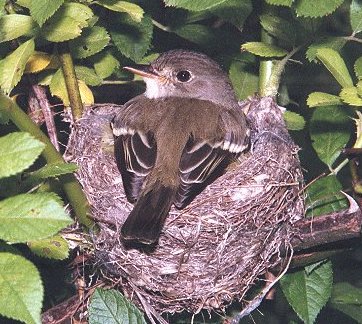
Willow flycatcher incubating eggs

Well camouflaged Willow flycatcher on nest
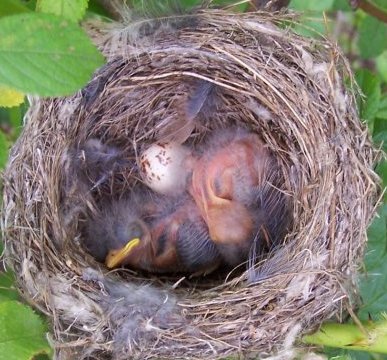
Willow flycatcher nestlings

Older nestlings
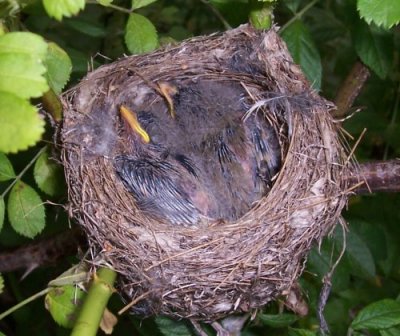
Still older Willow flycatcher nestlings

The trailer blind at the Willow flycatcher nest site. The nest is about 20 feet to the left of the blind.

Willow flycatcher nest with one brown headed cowbird egg and one flycatcher egg.

Nest with one brown headed cowbird egg and three Willow flycatcher eggs
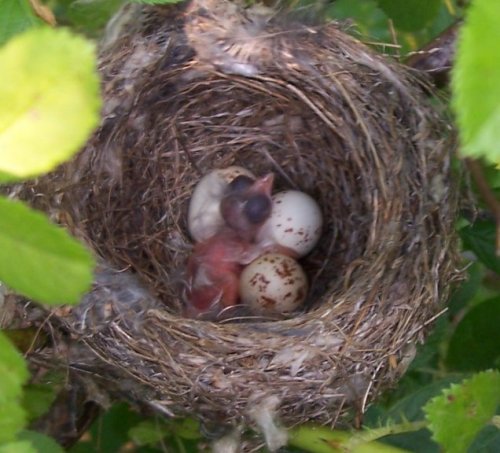
Newly hatched cowbird in Willow flycatcher nest

Newly hatched Willow flycatcher and two remaining flycatcher eggs
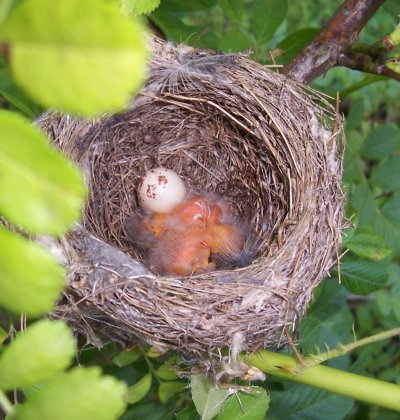
Two Willow flycatcher nestlings and one infertile egg.

Two day old Willow flycatcher nestlings
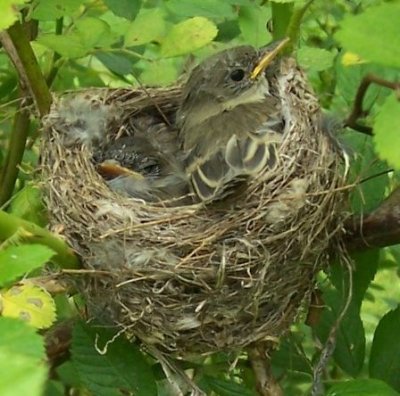
Willow flycatcher nestling nearing fledge day
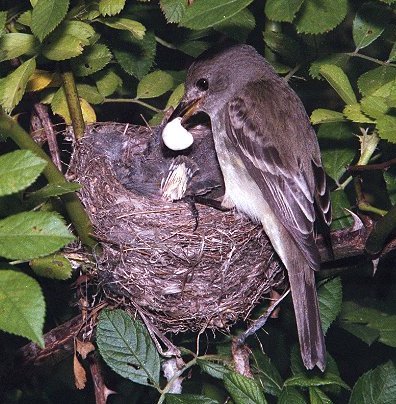
Willow flycatcher collecting fecal sac at nest
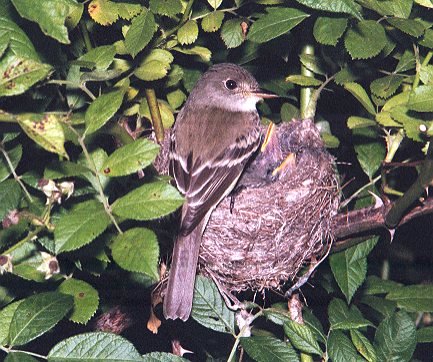
Adult Willow flycatcher on nest with young